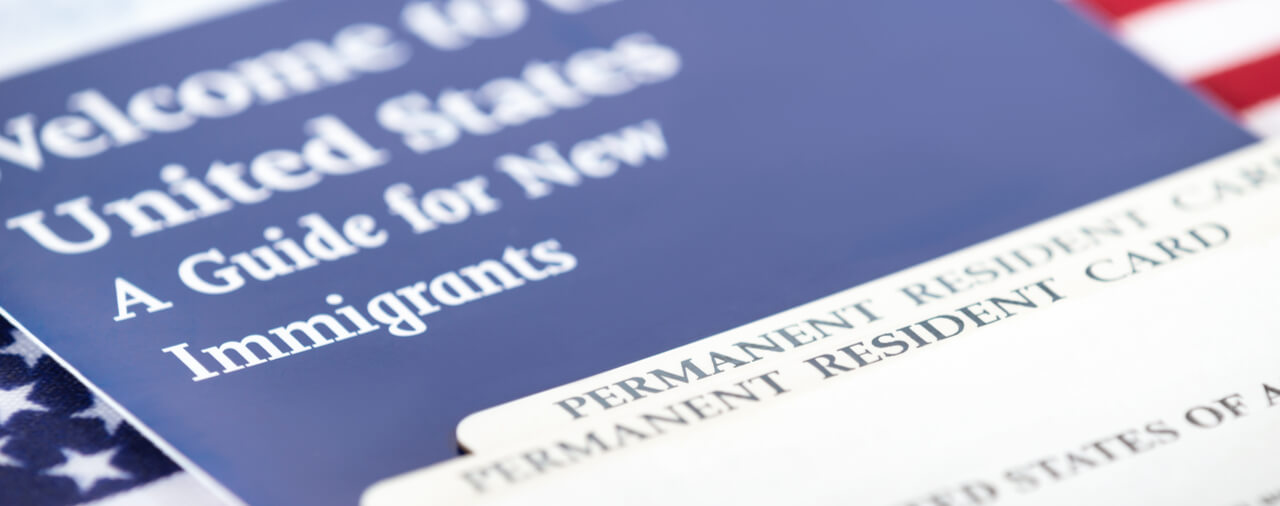- Introduction: SAVE Program
- How the SAVE Program Works for Benefit Applicants
- If the Person’s Immigration Status Cannot Be Verified
- Using SAVE CaseCheck
- Legal Authorities
- Conclusion
Introduction: SAVE Program
When a nonimmigrant, lawful permanent resident (LPR), or naturalized citizen applies for a benefit or license with a federal, state, or local government agency, the government agency must first verify the person’s immigration status to ensure that he or she is eligible for the benefit or license sought. In order to do this, government agencies use the United States Citizenship and Immigration Services’ SAVE Program. The SAVE Program allows government agencies to expeditiously confirm a person’s immigration status. For persons seeking a benefit or license, the USCIS created a tool called “SAVE CaseCheck.” SAVE CaseCheck allows applicants for benefits or licenses with government agencies to view their case status online.
In this article, we will examine the USCIS SAVE Program and the handy SAVE CaseCheck feature.
How the SAVE Program Works for Benefit Applicants
In general, applicants for government benefits or licenses do not interact directly with the SAVE Program itself. Rather, an applicant must provide one of the following documents to the government agency that he or she seeks a benefit or license from:
Certificate of Citizenship
Certificate of Naturalization
I-20 Certificate of Eligibility for Nonimmigrant Student Status
I-94 Arrival/Departure Record
I-94 stamp in an Unexpired Foreign Passport
I-551 Permanent Resident Card (“Green Card”)
I-766 Employment Authorization Card
Upon receiving the requisite document, the government agency will use it to verify the person’s immigration status and ensure that he or she is eligible for the benefit or license sought. The government agency may input the information into the SAVE Program electronically or by filing the Form G-485, Verification Request with the USCIS.
If the Person’s Immigration Status Cannot Be Verified
If the person’s immigration status cannot be verified, he or she should be provided with a fact sheet from the government agency [see Fact Sheet as of 10/14/16]. The Fact Sheet explains that the inability of the SAVE Program to confirm an applicant’s immigration status does not necessarily mean that the applicant lacks immigration status and is ineligible for the benefit sought. While it is possible that the applicant does actually lack the status, there may be other explanations. For this reason, the Fact Sheet explains that there are steps the applicant may take to remedy the situation if he or she does in fact have status.
With the USCIS
The applicant may visit the USCIS website at www.uscis.gov or call the USCIS’s National Customer Service Center at 1-800-375-5283 for information on how to correct a record or renew or replace a:
Certificate of Naturalization or Citizenship
I-551 Permanent Resident Card
Employment Authorization Document
Reentry Permit
Refugee Travel Document
USCIS-issued Form I-94 Arrival/Departure Record
The USCIS should be contacted only if the issue is with one of the above documents.
With the Customs and Border Protection (CBP)
The applicant may visit the CBP website at www.cbp.gov/contact for information about how to correct a Form I-94 Arrival/Departure Record or an admission stamp in a foreign passport. With regard to the Form I-94, the applicant must contact the USCIS if the Form I-94 was issued by the USCIS and not the CBP.
With the Immigration and Customs Enforcement (ICE), Student and Exchange Visitor Program (SEVP)
The applicant may visit the ICE website at www.ice.gov/sevis for information on how to update records for foreign students and exchange visitors.
Using SAVE CaseCheck
The USCIS offers a program called “SAVE CaseCheck” for applicants to check their case processing. There is no fee for using the Save CaseCheck, and an applicant may use it as many times as she wants. The SAVE CaseCheck feature may be accessed online at www.uscis.gov/save/casecheck (as of 10/14/16).
In order to use SAVE CaseCheck, an applicant must click “Check Your Case” and then enter his or her date of birth along with the document that he or she submitted to the government agency for verification purposes. It is important that the applicant choose the document that he or she provided to the government agency.
On October 13, 2016, the USCIS announced that Save CaseCheck is now available in Spanish [link].
To learn more about using SAVE CaseCheck, please see the USCIS SAVE CaseCheck Fact Sheet [see Fact Sheet].
Legal Authorities
The SAVE website contains a list of legal authorities underlying the SAVE Program [link (updated 06/15/16)]. In this section, we will provide a brief overview of some of these statutes for those who are interested.
The Immigration and Naturalization Service (INS) (this function is now that of the USCIS) was required under the Immigration Reform and Control Act of 1986 to create a system for verifying the immigration status of noncitizen applicants for, and recipients of, certain federally funded benefits. The system was required to be available to all government agencies administering those functions. The result of this statute would be the SAVE Program
Two important statutes changed the program in 1996. First, the Personal Responsibility and Work Opportunity Reconciliation Act of 1996 reformed the U.S. welfare system and restricted the eligibility of immigrants for certain public benefits. The statute also defined “federal public benefits” and “state and local public benefits.” The Illegal Immigration Reform and Immigrant Responsibility Act of 1986 (IIRIRA) required the Department of Homeland Security (DHS)-USCIS — to respond to all inquiries from qualifying government agencies seeking to verify or determine the citizenship or immigration status of any individual within the jurisdiction of the agency for any purpose authorized by law. The authority allowed agencies to use the SAVE Program to determine an individual’s immigration status or his or her naturalized or derived citizenship.
Conclusion
The SAVE Program is a centralized system for allowing government agencies to verify a person’s immigration status for purposes of certain benefit and licensure applications. It is important to note that the SAVE Program cannot be used by non-government entities or by government entities outside the scope of its narrow focus.
SAVE CaseCheck allows applicants for benefits or licenses to see the status of their case online. If the SAVE Program fails to confirm an applicant’s immigration status, he or she may be well advised to consult with an experienced immigration attorney for an evaluation of the potential problem. While the failure of the SAVE Program to verify status may have to do with the applicant’s status, it may also be an issue that is not related to the applicant actually lacking the requisite status. Prior to applying for a benefit or license, an experienced immigration attorney may be consulted for an evaluation of the applicant’s eligibility for a the benefit or license based on his or her immigration status.





